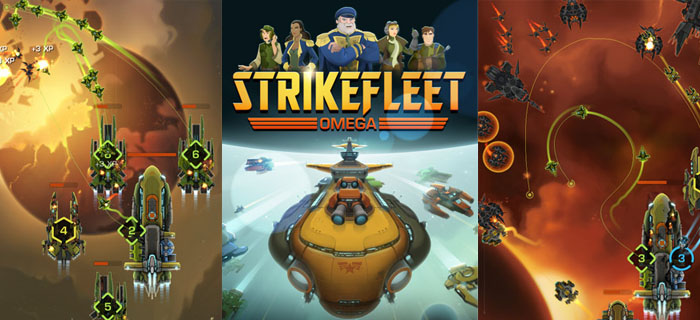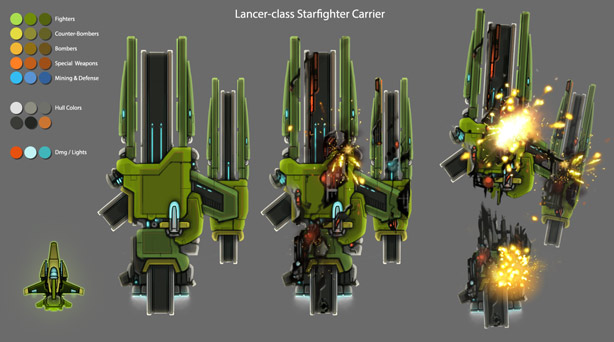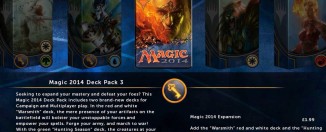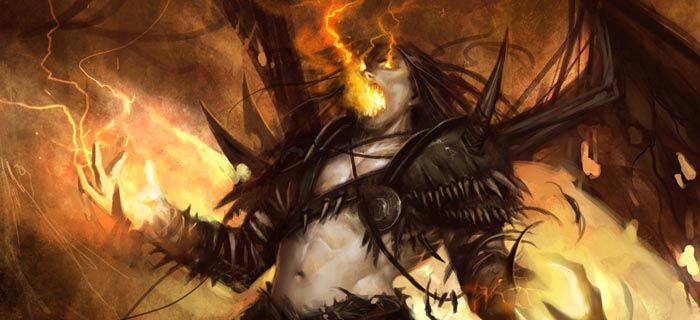Strikefleet Omega review: Homeworld bound
At the time of its release, Sierra’s Homeworld was deservedly considered a masterpiece of realtime strategy. In fact, the game was so well executed in every respect (gameplay, graphics, story, sound), it’s hard to believe nobody has tried to emulate its format. I suppose Sins of a Solar Empire came close, though in a soulless, mechanical sort of way.
I’m not holding my breath for Homeworld 3. Sure, the IP rights are secured by someone, but that doesn’t mean there’s a game in the works or even on a drawing board in some shadowy, corporate meeting room. In all likelihood, the original work and its two standalone sequels (Cataclysm, Homeworld 2) will have to stand as the end of the Higaaran saga.
However, that doesn’t mean I don’t occasionally itch for another cinematic, fleet-based strategy game. And while a smaller-by-comparison mobile game like Strikefleet Omega can’t possibly compare to the tone and versatility of one of the greatest titles of all time, it’s the only one in a long time to show off what a space-based RTS can be.
Pieces of the puzzle
Strikefleet Omega doesn’t have Homeworld’s three dimensional space, or its persistent fleet, or a particularly nuanced technology tree. The story has parallels to Homeworld’s (you command a mothership that’s fleeing a destroyed planet, making due with scrounged resources and tech along the way), but the tone is obviously the same kid-gloves stuff you get from most cell phone titles. There’s no multiplayer, either… just a single player campaign and a Survival challenge mode.
If that all sounds bad, don’t click away just yet. After all, I’m lining up a free mobile title with a retail game I worshipped like a god. There are going to be disappointments. But aside from the minor pitfalls inherent to all F2P Android titles, Strikefleet Omega is an engaging gameplay experience that carries the spirit of Homeworld into a new medium.
Battlestations ready
So, the Earth got blow’d up and everyone died became angels; now you’re humanity’s only hope. As Admiral of the last human fleet (you can probably guess its name) you must make your way across the galaxy, find the alien force that wiped out mankind, and… something. I didn’t beat every mission yet, so I don’t know what happens, but it would probably be a huge spoiler you wouldn’t want to read anyway.
As each mission begins, you’re granted a command ship that’s equipped with fighter craft and mining ships. The latter can harvest asteroids and debris for minerals; the former are there to protect your dust-diggers and the command ship itself. As you accumulate wealth, you can spend it on energy to warp in additional ships – bigger mining vessels, heavy artillery gunships, bomber squadrons, etc.
Making things go boom
The actual gameplay controls are intuitive and ingenious. Lines can be drawn from carrier-style ships (your command ship, fighter docks, and the like) to designate flightpaths for their attack craft. If you’re being attacked from the “west” you can draw a line straight to the threat to launch fighters at your enemies. Or, if you’d prefer, you can scribble a flanking maneuver to limit up-front damage. You can alternatively sketch a sprawling loop around ships/asteroids you’d like to defend, and the fighters will patrol them incessantly.
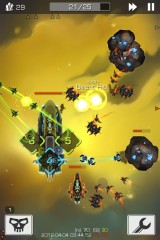 There is limited tactical depth, but understanding the speed and angle of approach of your ships will save time and lives. Likewise you can reroute your mining craft to avoid dangerous areas or to sieze an opportunity for more minerals. How well you plan these paths basically determines who lives and who becomes space debris. It’s like a more murderous version of Flight Control, and it works marvelously.
There is limited tactical depth, but understanding the speed and angle of approach of your ships will save time and lives. Likewise you can reroute your mining craft to avoid dangerous areas or to sieze an opportunity for more minerals. How well you plan these paths basically determines who lives and who becomes space debris. It’s like a more murderous version of Flight Control, and it works marvelously.
Artillery ships work differently; they fire their cannons wherever you tap on-screen. Having only one warp in is underwhelming, but two or more gives you the option to barrage a section of the map with all manner of space missiles. They do incredible damage, but require a lot more attention and aiming skill than the somewhat autonomous fighter craft.
There are other kinds of ships, including Tesla coiled battlecrusiers, but you get the idea. Warp into an area, survive enemy onslaught, and warp out. After each battle, you’ll get scored on performance, receive bonus credits, and be given an update on the story. The game moves along at a fun pace, and there’s a nice balance between “you have to be kinda good to progress” and “you can replay this if you care about perfection.”
Putting your best foot forward
Strikefleet Omega looks damn good. There’s a lot going on at any given time, which makes it all the more impressive. The illustrated artwork makes ships feel epic even on a handheld screen (again paralleling the concept art of Homeworld), and the hit/damage/kill effects are spot-on. Menus and cutscenes are a little basic, but not in any way that particularly detracts from the rest of the experience.
Equally good are the sound effects. Ships fire, explode, and launch with convincing clarity, letting you know what’s going on even when you’re way off screen. Sure, you could rag on the effects for existing at all in a vacuum, but if you’re a sci fi nerd, you’ve probably given up on the realism of space acoustics decades ago.
The presentation is strong overall, meting out bits of story where necessary and otherwise pushing you ever forward into battle. Menus are easy to navigate, and even the victory screen animations are skippable, allowing you to warp into the next fight quickly, if desired.
In fact, the only thing that slows down Strikefleet Omega is the cash shop/Megacredit system.
The cost of excellence
Everything has its price, and in this case, that price is money. You probably suspected that Strikefleet Omega couldn’t be 100% free and deliver such a compelling experience, and you’re right. In addition to the credit currency awarded for performance and special kills, purple Megacredits are required to purchase the most extravagant upgrades. Some of the most powerful ships can only be bought with these cash-shop space bucks, as can mid-battle nukes or pre-match passive bonuses (though the first one is always free).
While I was turned off at first by this system, my worries quickly dissipated. Megacredits can actually be earned in game (via special artillery challenges), and the normal credit-based ships still hold their own just fine, as long as you know what you’re doing.
And, of course, you can always just buy Megacredits, both to boost your own progress and to support the developers, Harebrained. In fact, it feels wrong to enjoy a unique experience like this and not kick a few bucks back to the people who made it possible.
Something something Starship Troopers
To paraphrase the excited young Johnny Rico, “Strikefleet Omega is really good. It lets you blow up bugs and you don’t have to pay anything, but you can if you want. It’s like Homeworld except it fits in your pocket. Service guarantees citizenship!”
That’s basically all there is to say about Strikefleet Omega. If you’re looking for an AAA RTS title that offers more engagement and less blah than other mobile offerings, this is it.
Play Strikefleet Omega
Download on Google Play for Android devices or on iTunes for iPhone and iPad.

